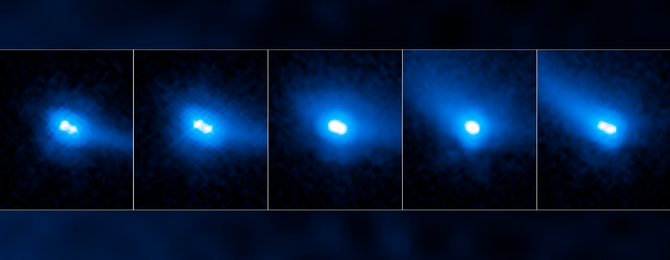Hubble spots never-before-seen hybrid asteroid twins orbiting each other within our solar system
The unique planetary body is the first to be classified as both a binary asteroid and a main-belt comet.

Nasa's Hubble space telescope has discovered a unique planetary object in our solar system — a pair of asteroids orbiting each other, which also have comet-like features, including a bright halo and a long tail. The strange, never-before-seen object is now the first-ever to be classified as both a binary asteroid and a main-belt comet.
The binary asteroid that doubles as a comet was first spotted in 2006 by the Spacewatch programme and was named 2006 VW139. However, it wasn't until 2012 that astronomers noted something strange about the binary object — which was a streaming comet-like tail of dust.
As the twin object drew closer to the Sun in September last year, the Hubble captured clear images of the binary asteroid's comet-like features. The duo, which have similar mass, were found orbiting each other at a distance of just under 100km (60 miles).
More recently, Hubble's observations of the binary asteroid revealed some ongoing activity. "We detected strong indications for the sublimation of water ice due to the increased solar heating — similar to how the tail of a comet is created," said Jessica Agarwal of the Max Planck Institute for Solar System Research, Germany.
Astronomers estimate that 2006 VW139 has been in existence as a binary system for around 5,000 years. One theory of how it came into existence suggests that extremely fast rotation may have resulted in the asteroid breaking up, with the two fragments moving away due to ice sublimation.
The discovery of the binary system raises questions about how common such planetary objects may be in the solar system.
"We need more theoretical and observational work, as well as more objects similar to this object, to find an answer to this question," Agarwal said.
© Copyright IBTimes 2025. All rights reserved.






















